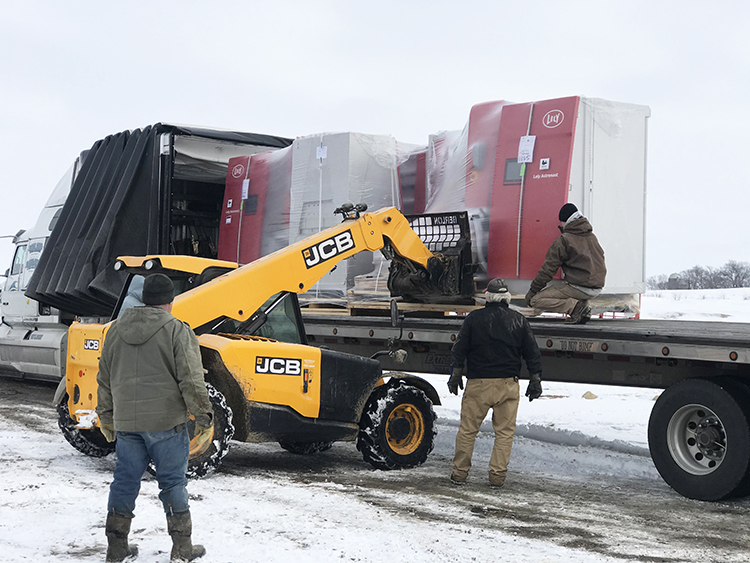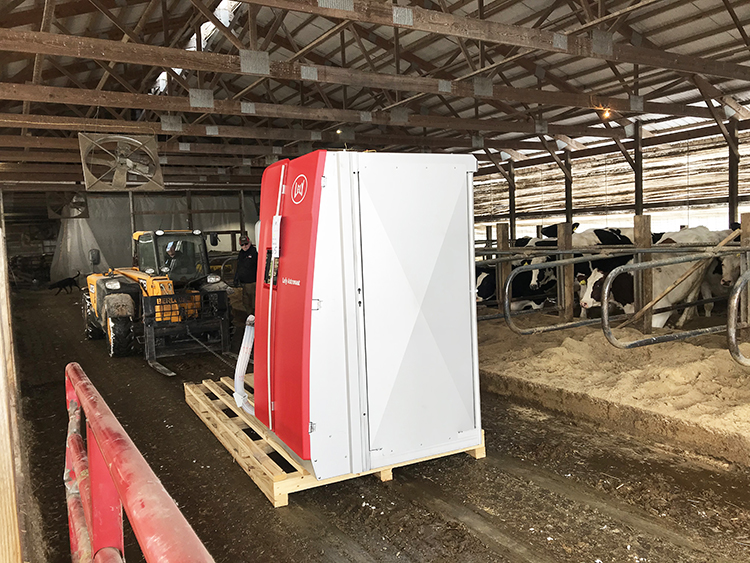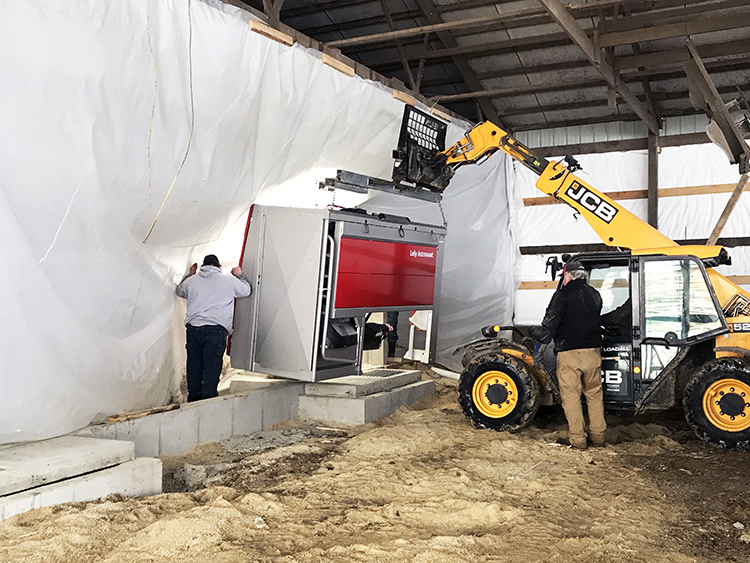
The other night, our robotic milkers called 36 times with one alarm or another. My dad got an early start on morning milking simply because he had been up since 11 p.m. the night prior tending to the robots. What’s ironic is that this happened the night before our two new robots were delivered via semi-trailer, doubling the size of our robotic milking setup.
For something coined as smart and self-sufficient, robotic milking units still require some babysitting, 24/7 availability, and regular maintenance. However, the benefits of cow comfort, improved milk production, labor flexibility, and more are why we made the switch. Of course, my dad doesn’t always agree with these benefits on late nights like the one I mentioned earlier.
Since 2016, when we retrofitted one of our two freestall barns to be a robot barn, our farm has been a hybrid setup where we milk half our herd with two robots and the other half in our double-eight parallel milking parlor. This has granted some flexibility for our family and the cows.

My brother, who is 27 years old, has managed the cows in the robot barn and taken care of daily maintenance and chores associated with the robots. With bigger stalls and more freedom to do as they please, our larger cows usually end up in the freestall barn with the robotic milkers. Meanwhile, my parents and I continue milking our smaller-framed cows and others more susceptible to illness and lameness in the parlor where they can be monitored more closely.
This transitional setup has worked well for our family and cows; however, as my parents grow older (despite my dad, in typical farmer fashion, showing no signs of slowing down) and finding employees willing to milk cows and stick around grows increasingly difficult, our family sat down to make a decision. After some debate, it was decided to put in two additional robots and expand one of our freestall barns to house the majority of our milking herd.
Fortunately, my brother and dad have incredible foresight. This is no exaggeration — successful farmers have the ability to think ahead to every future need, and my brother and dad are exceptional in that arena. So, being the proactive thinkers they are, they worked with my uncle (who has a construction company and serves as our contractor for all farm improvements) to plan out extra drains, electrical outlets, and so forth when we put in the first robots that would be strategically placed and ready for the day more robotic units were added to the mix.
Well, that day has come. Since we made the decision to move forward less than two months ago, construction has been going full steam despite being in the thick of Iowa winter, and our new robotic milking units were delivered and placed this week.

This is such a big but necessary step for our farm. While we still plan to milk our hospital pen of cows and those that just calved in our existing parlor, our labor needs will shift and our chore schedule will become a bit more flexible to accommodate field work and other aspects of the farm. Expanding the existing robot freestall barn will give our cows more room and also allows us to convert our older freestall barn into comfortable pens for our soon-to-calve, recently calved, and hospital cows.
I still vividly remember the month we put in our first two robotic milkers. We had shifts both morning and night — and every minute in between — where we watched the robots work, cleaned as needed, learned tricks from the Lely team members, and trained the cows to visit the robots. Those were long hours when countless games of cards were played as we tried to stay awake and maintain some sanity. I can say for certain, my family is beyond relieved our cows are already trained to use the robotic milkers, so our transition from two to four units should be incredibly simple in comparison to our start on the robot journey five years ago.
That’s a peek into our robot adventure so far and what it is soon to be. It will be spring before our new units are working at capacity with the barn extension. Until then, I’ll be sure to share updates as I have them.

The author dairy farms with her parents and brother near Hawkeye, Iowa. The family milks approximately 300 head of grade Holstein cows at Windsor Valley Dairy LLC — split half and half between a double-eight parallel milking parlor and two robotic milking units. In the spring of 2020, Molly decided to take a leap and fully embrace her love for the industry by returning full time to her family’s dairy.







